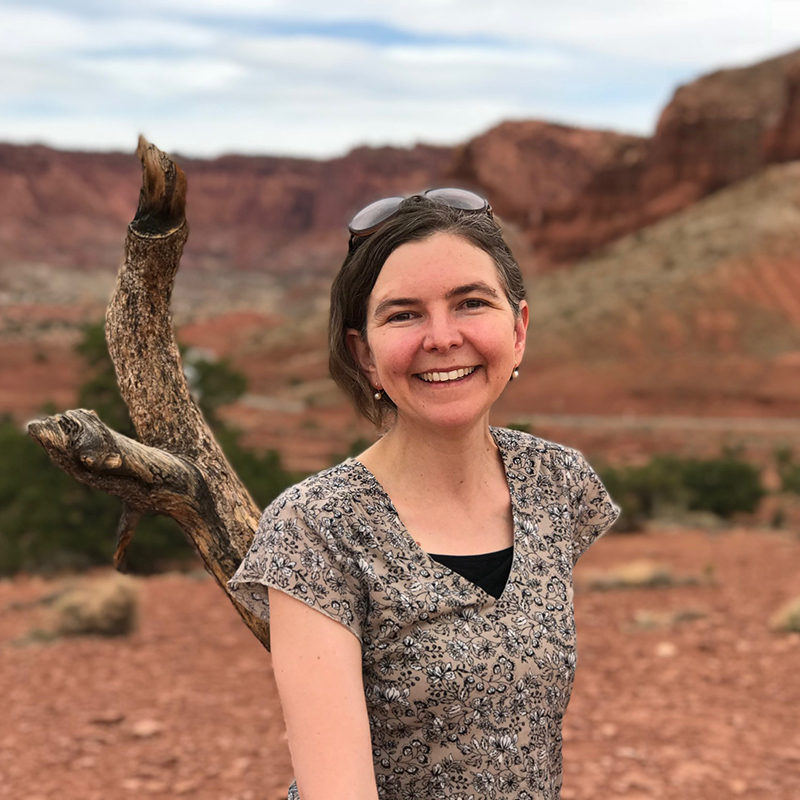Gretchen Henderson
 The soundscape: birdsong, bugling elk, mosquito buzz. Storms chase up the valley and
rattle the earth. The ever-changing palate: storm, sun, dawn and dusk. The "Big Sky"
scope of the Centennial cannot help but shift the rhythm of days.
The soundscape: birdsong, bugling elk, mosquito buzz. Storms chase up the valley and
rattle the earth. The ever-changing palate: storm, sun, dawn and dusk. The "Big Sky"
scope of the Centennial cannot help but shift the rhythm of days.
Artist residencies support an extended immersion in a place, a chance to live somewhere less as a visitor or tourist than as a temporary local, trying to humbly appreciate a place from the inside out, to listen and partake in everyday encounters and conversations. Admittedly, it’s a privileged immersion, and that is precisely what makes it so extraordinary. The residency provides the opportunity to slow down and get a new perspective on a project, a place, artistic processes, environmental rhythms, life. In a place as remote as the Centennial Valley, everyone is very aware of their interdependence. While year-round and seasonal residents and visitors have very different livelihoods, they share stakes in the Valley and have developed creative partnerships, formally and informally, to care for each other and for the ecosystem. It’s a very dynamic and complex place and set of relationships, which I felt fortunate to be a part of, even for a short time.
The Centennial Valley is now forever planted in my imagination—the expanse of sky, shifting dramatic light, the kindness of people: from scientists on the refuge, to ranch families, to others who make a life interdependently with the landscape. In the past I had visited Montana, Idaho, Wyoming, and the Greater Yellowstone Ecosystem but now have a more intimate sense of its scope and depth. As much as the immersion itself, the end of an artist residency is when the work really begins: what are its ripple effects? It’s like touching the Missouri River headwaters at Hell Roaring Creek in the Centennial Valley and realizing that same water may end up in the Mississippi Delta and the Atlantic Ocean. You have to be patient enough to follow the meandering course.
“Breakthroughs” sometimes get construed as something big. I would say the small moments are more revelatory—for instance, getting up at 4:30 a.m. and spending a few hours to watch the dawn, slowing down enough to notice the subtle glowing shifts and shadows of sunrise. To listen to a northern flicker and watch the flaming underside of its wingspan. To spot a red fox, or electric streaks of lightning, or a double rainbow that spans the entire valley floor. To smell incoming rain and watch sunset’s colors fade against the bright rise of a moon. A place’s rhythms work into the rhythms of writing. My projects always cross-pollinate. I went to work on a long-term project on "A Philosophy of Stones" and "Tectonic Essays" and presented "Life in the Tar Seeps" at Science Wednesday (the weekly community potluck). Some days I wrote about places as different as Montana, Greece, and Mars, which goes back to my comment about the Missouri River headwaters, following a long and meandering course from its source.
Over the weeks, I was moved by the wild beauty of the Centennial Valley, the conservation efforts of the neighboring Red Rock Lakes Wildlife Refuge and Nature Conservancy, the dedication of the Taft-Nicholson Center's staff and donors to steward the landscape and promote environmental education, and communal collaborations of residents through the Centennial Valley Association. Against the backdrop of a larger world being torn apart, the Centennial Valley feels like a hopeful microcosm of what can happen when communities pull together to value and protect the natural, volatile and vulnerable wonders of our planet.
Website: www.gretchenhenderson.com
Gretchen Henderson is the Annie Clark Tanner Fellow in Environmental Humanities at the University of Utah. She has compiled an extensive teaching, performance, exhibition, and publication profile working across many fields with awards for her innovative and interdisciplinary work in multiple genres. Her books of nonfiction and fiction include Ugliness: A Cultural History (2015, translated in 2018 for Turkish, Korean, Chinese, and Spanish editions), The House Enters the Street (2012, shortlisted for the AWP Award Series in the Novel), Galerie de Difformité (2011, winner of the Madeleine P. Plonsker Writer’s Prize), and On Marvellous Things Heard (2011), along with operatic and intermedia works. Her awards include the Hodson Trust-JCB Fellowship in Creative Arts from Brown University, Mellon Postdoctoral Fellowship in the Humanities from MIT, MetaLAB Research Fellowship from Harvard, and grants from the National Endowment for the Humanities.
